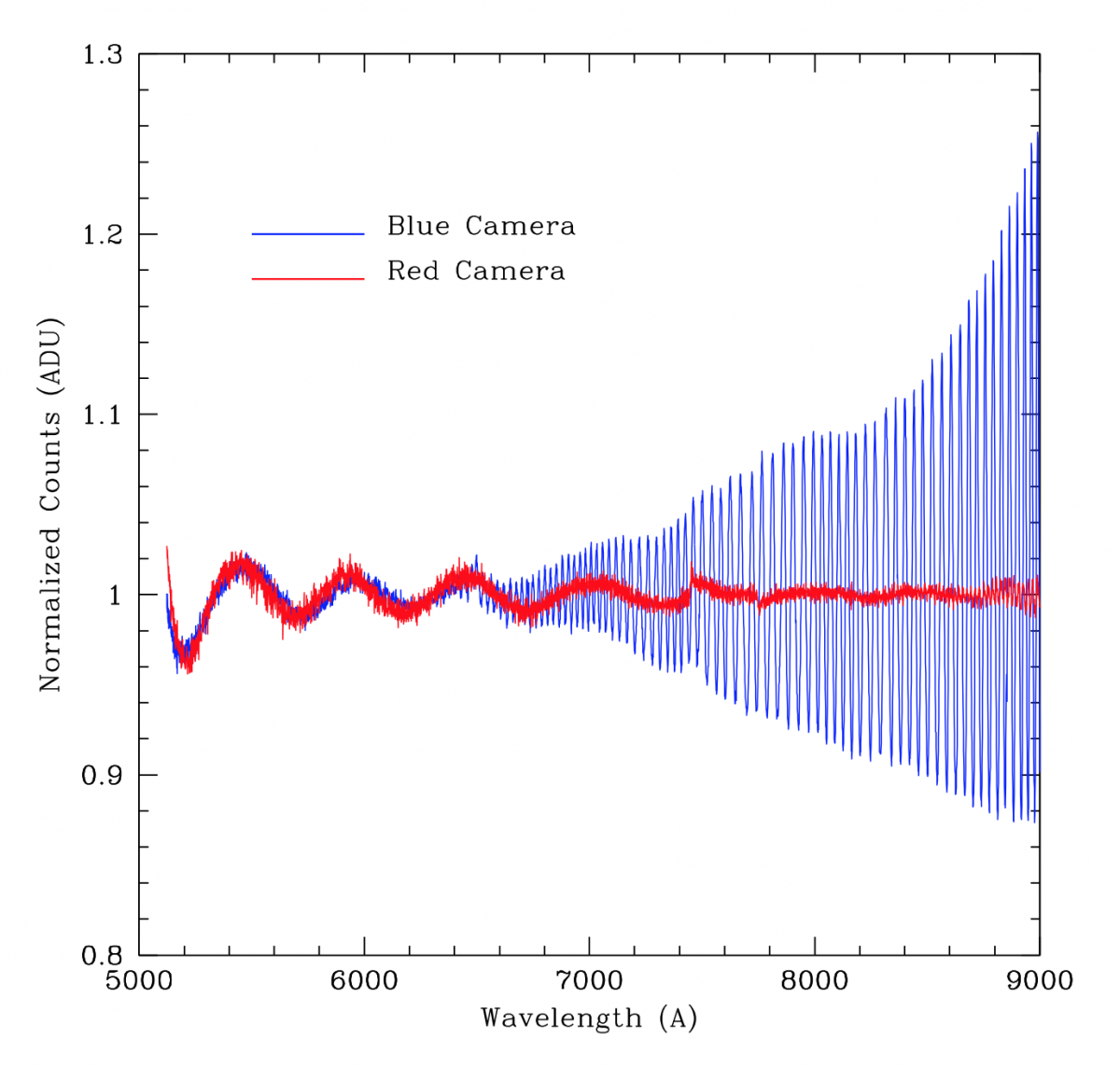Goodman Spectrograph Updates (Oct 21, 2016)
Submitted by cbriceno on Fri, 2016-10-21 00:12
New Red Camera available in shared risk mode
The new camera and its associated hardware and software have now been tested and found to be working correctly, with only a few minor issues on the software side, which UNC and CTIO staff are working on. Therefore, we are offering the Red Camera to experienced users with time scheduled in semester 2016B who might benefit from it, on a shared risk basis.
The policy for selecting between cameras is as for gratings and filters, i.e., this is a daytime task for our Observer Support staff, and therefore there will be no camera changes during the night. Exceptions to this rule are major failures which would otherwise compromise the whole night.
In the case of split nights during the 2016B semester, we adopt the following guidelines:
- The Red Camera will be used in split nights only if both teams request it, assuming both will use Goodman.
- Users should always contact your Instrument Support Scientist ahead of your observing run, to make sure the Red Camera is available and be informed of any changes or updates.
- Until we update our Instrument Setup form, we ask that you specify the Blue or Red Camera in the Comments section.
- If the observer fails to specify either camera, we will default to the Blue Camera.
Preliminary Performance Information
The detector is an e2v deep depletion CCD with a broadband antireflection coating. It therefore has much better fringing performance in the red (see the figure and table below). Based on our preliminary reductions of commissioning data, performance of the blue and red cameras is comparable over most wavelengths below 700 nm, except for the ultraviolet.
Our recommendations (pending final reductions) are:
- If you require data beyond 7000 Å, you should definitely request the red camera.
- If you do not require data below 4000 Å or above 7000 Å, it’s likely either camera will work well for you.
- If you do require data below 4000 Å, you should stick with the blue camera.
The figure shows a comparison of normalized quartz lamp flats, obtained using the 400 line grating in the 400 M2 setup (which provides a wavelength range from ~5000-9000 Å), with 1.03" slit. The vastly reduced fringing with the red camera's CCD is readily apparent.
NEW GRATINGS
Three new gratings have been delivered for the Goodman spectrograph, fabricated by Chris Clemens and his team at the Goodman Lab at UNC. A blue-optimized 600 l/mm grating: 600Blue, a red-optimized 600 l/mm: 600Red, and a blue-optimized 1200 l/mm (1200Blue). We have not yet characterized them on sky, but they are available for users can request them.
Our existing 1200 line grating, which has better performance in the red, will now be renamed 1200Red. The existing 600 line grating is now renamed as 600M. At this time our recommendations on use of the gratings are:
- If your interest is in the read part of the spectrum, and your program calls for a 600 line grating, we advise you request the old 600 line grating (now named 600M), until we characterize the new 600Red grating.
- If you need a 600 line grating in the blue/UV, use the new 600Blue.
- If your program needs a 1200 line grating, use the old one (now renamed 1200Red) for the red, and the new 1200Blue if your interest is the blue end of the spectrum.
Updated on August 19, 2021, 7:34 am

